 W
WThe Kuba Kingdom, also known as the Kingdom of the Bakuba or Bushongo, is a traditional kingdom in Central Africa. The Kuba Kingdom flourished between the 17th and 19th centuries in the region bordered by the Sankuru, Lulua, and Kasai rivers in the heart of the modern-day Democratic Republic of the Congo.
 W
WThe Aka or Bayaka are a nomadic Mbenga pygmy people. They live in southwestern Central African Republic and in northern Republic of the Congo. They are related to the Baka people of Cameroon, Gabon, northern Congo, and southwestern Central African Republic.
 W
WAlur are a Nilotic ethnic group who live in northwestern Uganda and northeastern Democratic Republic of the Congo (DRC). They are part of the larger Luo group.
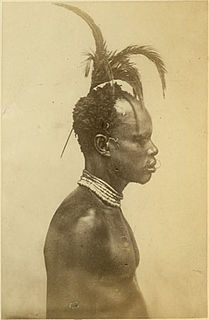 W
WAvukaya is an ethnic group of South Sudan. Some members of this ethnic have fled to the Democratic Republic of the Congo due to persecution. About 50,000 members of this ethnic group live in South Sudan. Many members of this ethnic group belong to the Christian minority of South Sudan. The Avukaya traditionally live in a rain-forest area in Equatoria close to the Democratic Republic of Congo in Southern Sudan.
 W
WThe Baka are an ethnic group from the Democratic Republic of the Congo and Western Equatoria in South Sudan. They are mainly Christian and number about 25,000 people (1993).
 W
WThe Banda people are an ethnic group of the Central African Republic. They are likewise found in the Democratic Republic of the Congo, Cameroon, and South Sudan. They were severely affected by slave raids of the 19th century and slave trading out of Africa. Under French colonial rule, most converted to Christianity but retained elements of their traditional religious systems and values.
 W
WBanyamulenge is the name that describes a community in the southern part of Kivu, Democratic Republic of the Congo. The Banyamulenge of South Kivu are culturally and socially distinct from the Tutsi of North Kivu. Most Banyamulenge speak Kinyamulenge, which is a mixture of Kinyarwanda and Kirundi with specific phonological and morphological features not found in the latter two.
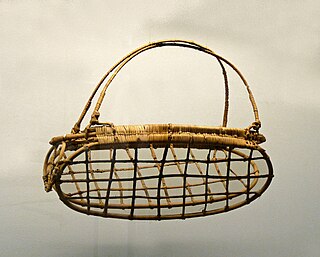 W
WThe Barambu are an ethnic group who live in the northeast of the Democratic Republic of the Congo.
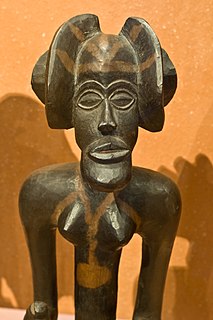 W
WThe Chokwe people, known by many other names, are an ethnic group of Central and Southern Africa. They are found primarily in Angola, southwestern parts of the Democratic Republic of the Congo, and northwestern parts of Zambia.
 W
WThe Dengese, also known as the Ndengese, are an ethnic group from Democratic Republic of the Congo. They speak Bondengese and Lingala.
 W
WEffacer le tableau was the operational name given to the systematic extermination of the Bambuti pygmies by rebel forces in the Democratic Republic of the Congo (DRC).
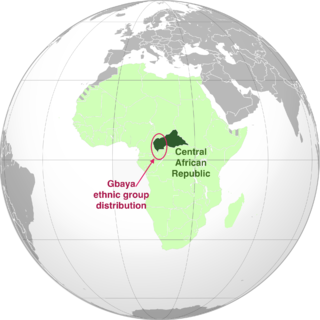 W
WThe Gbaya, also Gbeya or Baya, are a people of western region of Central African Republic, east-central Cameroon, the north of the Republic of Congo, and the northwest of the Democratic Republic of Congo. In the first half of the 20th century, the Gbaya were involved in several revolt attempts against German and then French colonial rule.
 W
WThe Great Lakes Twa, also known as Batwa, Abatwa or Ge-Sera, are a Bantu ethnic group native to the African Great Lakes region on the border of Central and East Africa. As an indigenous pygmy people, the Twa are generally assumed to be the oldest surviving population of the Great Lakes region. Current populations of Great Lakes Twa people live in the states of Rwanda, Burundi, Uganda and the eastern portion of the Democratic Republic of Congo. In 2000 they numbered approximately 80,000 people, making them a significant minority group in these countries.
 W
WThe Hema people or Bahema (plural) are an ethnic group of Nilotic origin who are concentrated in parts of Ituri Province in the eastern Democratic Republic of the Congo.
 W
WThe Kakwa people are a Nilotic ethnic group and part of the Karo people found in north-western Uganda, south-western South Sudan, and north-eastern Democratic Republic of the Congo, particularly to the west of the White Nile river.
 W
WThe Kongo people are a Bantu ethnic group primarily defined as the speakers of Kikongo.
 W
WThe Lega people are a Bantu ethnic group of the Democratic Republic of the Congo. In 1998 their population was about 250,000.
 W
WMbunda people started migrating to Barotseland now Western Province of Zambia in the latter part of the 18th Century.
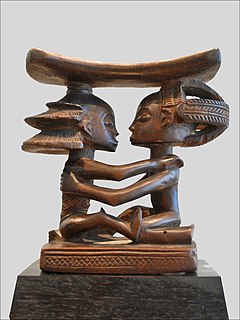 W
WThe Luba people or Baluba are an ethno-linguistic group indigenous to the south-central region of the Democratic Republic of the Congo. The majority of them live in this country, residing mainly in its Katanga, Kasai and Maniema. The Baluba Tribe consist of many sub-groups or clans who speak various dialects of Luba and other languages, such as Swahili.
 W
WThe Lugbara are a Central Sudanic ethnic group who live mainly in the West Nile region of Uganda, in the adjoining area of the Democratic Republic of the Congo (DRC). They speak the Lugbara language, a Central Sudanic language similar to the language spoken by the Madi, with whom they also share many cultural similarities.
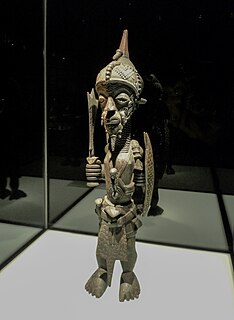 W
WThe Lulua people are a Bantu ethnic group settled along the Lulua River valley in south central Kasai-Occidental province, Democratic Republic of the Congo. The Lulua are in fact a collection of small groups whose home bordered by the larger Luba state and the related Songye people and Chokwe people, with whom they share a very similar culture, history, and language.
 W
WThe Lunda are a Bantu ethnic group that originated in what is now the Democratic Republic of the Congo along the Kalanyi River and formed the Kingdom of Lunda in the 17th century under their ruler, Mwata Yamvo or Mwaant Yav, with their capital at Musumba. From there they spread widely through Katanga and into Eastern Angola, north-western Zambia and the Luapula valley of Zambia.
 W
WThe Makere are an ethnic group of the Democratic Republic of the Congo, living near the Bima River in the Northern part of the country. They speak the Mangbetu language.
 W
WThe Mangbetu are a Central Sudanic ethnic group in the Democratic Republic of the Congo, living in the northeastern province of Haut-Uele.
 W
WThe Mayogo people are an ethnic group of Central Africa, concentrated predominantly in northeastern Democratic Republic of the Congo.
 W
WThe Mbuti people, or Bambuti, are one of several indigenous pygmy groups in the Congo region of Africa. Their languages are Central Sudanic languages and Bantu languages.
 W
WThe Mongo people are a Bantu ethnic group who live in the equatorial forest of Central Africa. They are the second largest ethnic group in the Democratic Republic of Congo, highly influential in its north region. A diverse collection of sub-ethnic groups, they are mostly residents of a region north of the Kasai and the Sankuru Rivers, south of the main Congo River bend. Their highest presence is in the province of Équateur and the northern parts of the Bandundu Province.
 W
WThe 14,000 Twa of the swamp forest north and west of Lake Tumba and between Tumba and Lake Mai-Ndombe in the west of the Congo are one of several fishing and hunter-gatherer castes living in a patron–client relationship with farming Bantu peoples across central and southern Africa. In this case the people are the Mongo, specifically the Mongo tribes known as Ntomba, Lia (Bolia), and Konda. The two castes are called Oto and Twa: The Oto are the agricultural patrons of the Twa.
 W
WNgata people are Bantus from the Democratic Republic of the Congo, Central Africa.
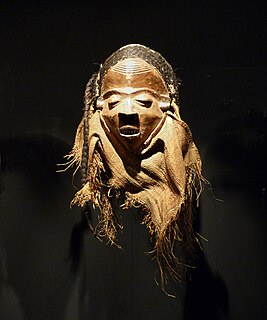 W
WThe Pende people, also known as the Phende people, are an ethnic group in the south-western Democratic Republic of the Congo. The Pende are divided into two cultural groups: the Eastern Pende and the Western Pende who are distinct but consider themselves part of the same ethnic group. The number of people who consider themselves to be ethnically Pende is estimated at over 250,000.
 W
WThe Sango people are an ethnic group living on the banks of the Ubangi River in the Central African Republic. They speak a Northern Ngbandi-based creole language called Sango, which belongs to the Ubangian branch of the Niger-Congo family.
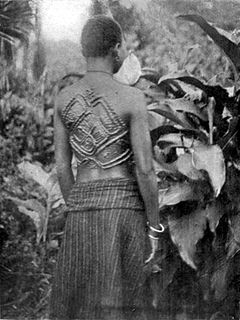 W
WThe Tetela people are a Bantu ethnic group of the Democratic Republic of the Congo, most of whom speak the Tetela language.
 W
WThe Topoke people are an ethnic group that live in the Isangi Territory south of the Congo River, downstream from Kisangani in Tshopo District of the Democratic Republic of the Congo. They speak the Poke language, in the Soko–Kele languages group of Bantu languages.
 W
WThe Twa are a group of indigenous African Pygmy tribes.
 W
WThe Vili people are Central African ethnic group, established in southwestern Gabon, the Republic of Congo, Angola and the Democratic Republic of Congo. It's a subgroup of Bantu and Kongo peoples.
 W
WThe Vira people or Bavira are one of the most numerous tribes in the Eastern Democratic Republic of the Congo. These people are located in the region of Uvira in the East of the country, on the northeast coast of Lake Tanganyika at the border with Burundi. The Bavira are also known in the name of Benembuga in Kivira which means "authentic Uvira citizens."
 W
WThe Yaka are an African ethnic group found in southwestern Democratic Republic of the Congo, with Angola border to their west. They number about 300,000 and are related to the Suku people. They live in the forest and savanna region between the Kwango River and the Wamba River. They speak the Yaka language).
 W
WAt least two groups of people in Africa are described as the Yombe people. They reside primarily in Zambia, Republic of the Congo, the Democratic Republic of the Congo and Angola. Adept at crafts and art, the men are involved in weaving, carving, and smelting, and the women make clay pots. Popular figures include the Nkisi nkonde and female phemba statues.
 W
WThe Azande are an ethnic group of North Central Africa.
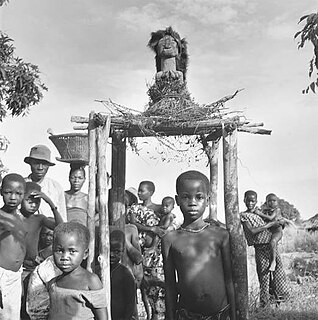 W
WThe Zappo Zap were a group of Songye people from the eastern Kasaï region in what today is the Democratic Republic of the Congo. They acted as allies of the Congo Free State authorities, while trading in ivory, rubber and slaves. In 1899 they were sent out by the colonial administration to collect taxes. They massacred many villagers, causing an international outcry.